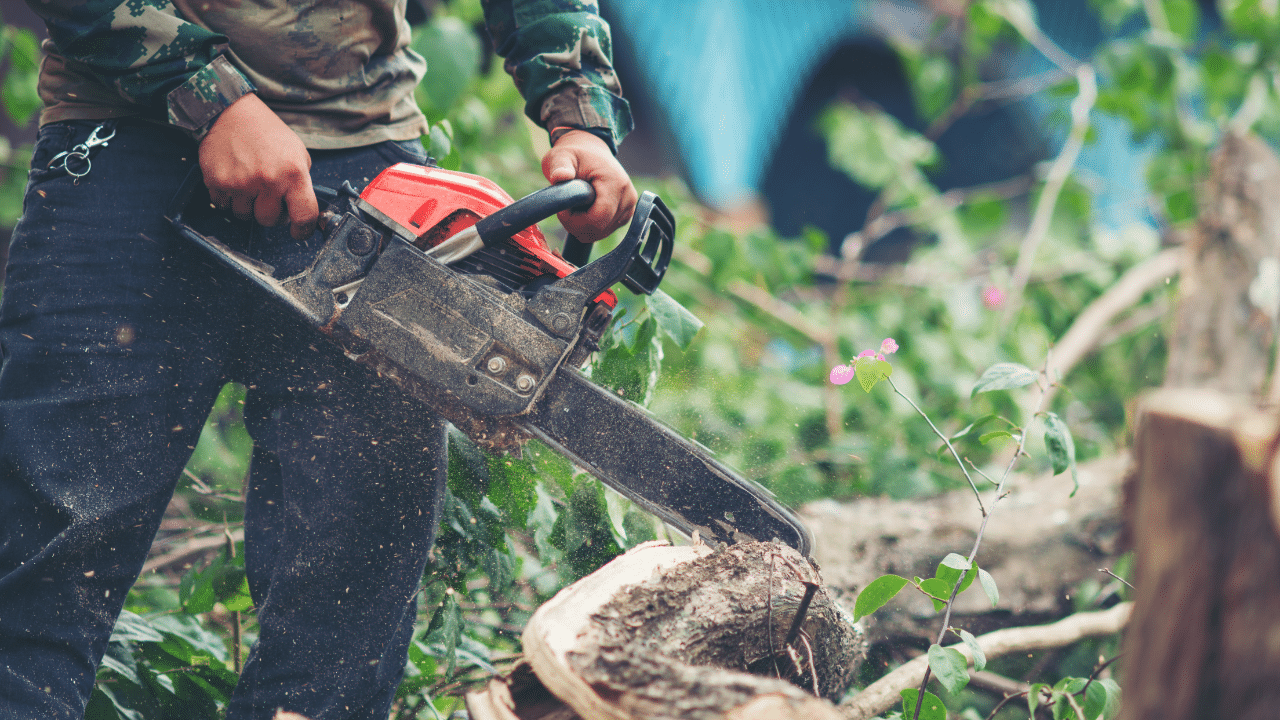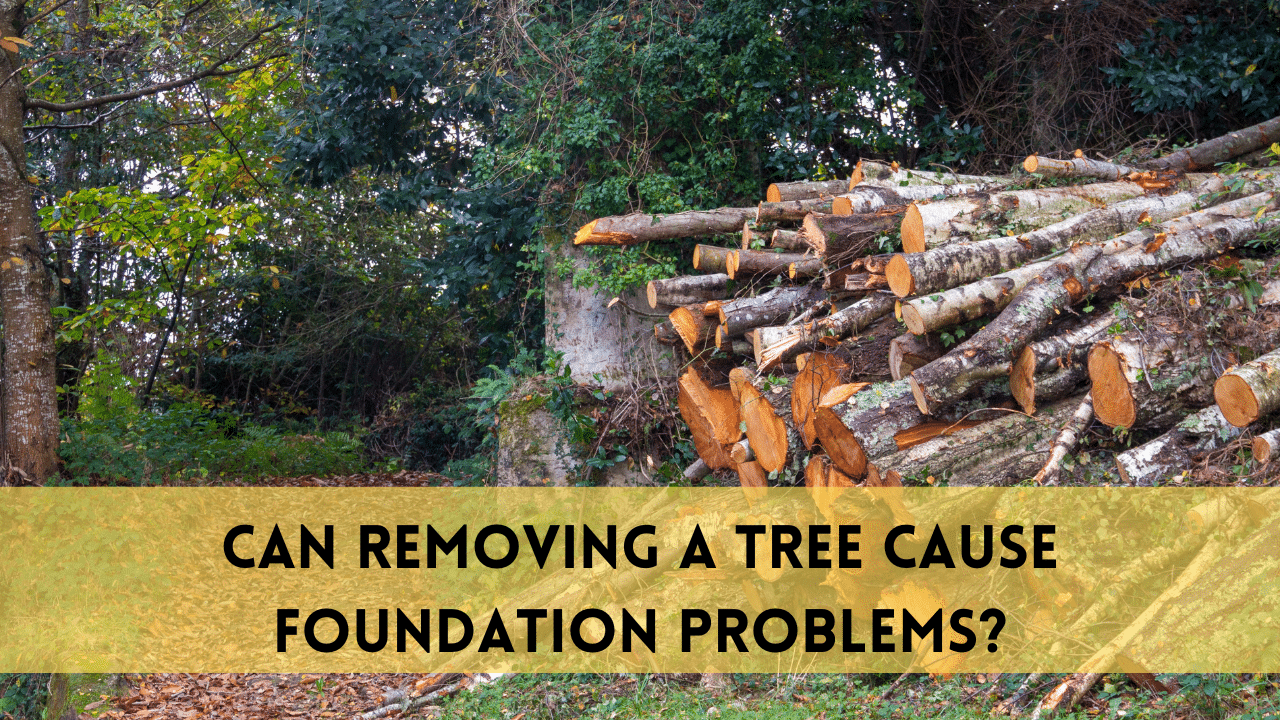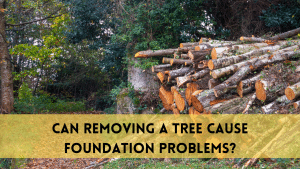Have you ever wondered, Can removing a tree cause foundation problems? It’s a common concern among homeowners, and rightfully so. Trees provide more than just shade and beauty. Their roots play a crucial role in stabilizing the soil and preventing erosion. But can removing a tree cause foundation problems? Let’s dig deeper into this question.
Understanding the Role of Trees in Foundation
let’s explore the relationship between trees and soil stability. Before we delve into whether removing a tree can impact your home’s foundation. Trees have extensive root systems that spread out in search of water and nutrients. These roots help bind the soil together, reducing the risk of erosion and soil movement.
How Removing a Tree Cause Foundation Problems?
When a tree is removed, its root system begins to decay, leaving behind empty spaces in the soil. This can lead to soil compaction and a decrease in overall soil stability. Without the roots to hold it together, the soil becomes more prone to shifting and settling. Which can affect the foundation of nearby structures.
Potential Effects: Can Removing a Tree Cause Foundation Problems
Now, let’s address the big question: can removing a tree cause foundation problems? The answer is yes, it can. The soil around your home’s foundation becomes less stable due to tree removal. As it may start to shift and settle unevenly.
This uneven settling can put stress on your home’s foundation. Leading to cracks, shifts, and other structural issues over time.
Can Removing a Tree Cause Foundation Problems
So how can you determine whether foundation issues have resulted from tree removal? Watch out for the following indicators:
Cracks in Walls or flooring:
The emergence of cracks in your walls or flooring is one of the most obvious indicators of foundation issues. These fissures could begin little and progressively enlarge with time. They frequently happen as a result of the foundation’s uneven settling as the soil beneath it changes.
Sticking Windows and Doors:
If you find it difficult to open or close your windows and doors all of a sudden, it may indicate that your foundation is shifting. Misaligned door and window frames can be caused by foundation shifting, sticking, or jamming.
Uneven Floors:
An uneven floor is another sign that there might be issues with the foundation. Your home’s floor may have some spots where it seems uneven or drooping if it was built on unstable ground or if it is older. Heaving and foundation movement are the two primary reasons for uneven floors that can be made worse by tree removal.
Gaps Around Windows and Doors:
Be mindful of any spaces that might open up around your doors and windows. The frames may have pulled away from the walls as a result of foundation shifting, as indicated by these gaps. This may damage the structural integrity of your house and reduce its energy efficiency.
Cracks in the Foundation That Are apparent:
Look for any apparent cracks in the foundation on the outside of your house. Large or expanding cracks may be signs of more significant foundation problems that need to be addressed, even though some minor cracking may be normal due to settling.
Bowing or Leaning Walls:
In severe cases, foundation problems can cause walls to bow or lean inward or outward. This can occur when the foundation shifts unevenly, putting pressure on the walls and causing them to deform. Bowing or leaning walls should be addressed promptly to prevent further structural damage.
Sagging or Uneven Roofline:
Keep an eye on the roofline of your home for any signs of sagging or unevenness. Changes in the roofline can be indicative of foundation movement, as the entire structure may be shifting or settling unevenly.
Through alertness and identification of these indicators, homeowners can proactively resolve foundation issues before they worsen. If any of these symptoms are noticed, it is recommended to speak with a qualified foundation repair specialist, particularly following the removal of a tree or other large landscaping modifications.

Preventive Actions before Removing a Tree
Although the removal of trees may result in foundation issues, there are precautions you may take to reduce the risk:
Speak with a Specialist: To determine the possible influence on the foundation of your house, speak with a licensed structural engineer or arborist prior to taking down a tree.
Examine Alternatives: To protect the tree while reducing hazards, consider alternatives to tree removal such as pruning or installing a root barrier.
Track Soil Moisture: To avoid soil erosion and instability, monitor the levels of soil moisture around the base of your house and make sure that adequate drainage is in place.
FAQs
Can removing a tree cause foundation problems?
Absolutely, because tree removal can cause the soil around your home’s foundation to become unstable, it may result in foundation problems.
How soon after removing a tree could issues with the foundation arise?
Depending on the size, composition, and proximity of the tree to the house, among other considerations, foundation issues may appear gradually after the tree is removed.
After removing a tree, are there any warning signals that point to potential foundation issues?
Indeed, typical indicators include gaps around windows and doors, stuck windows and doors, uneven flooring, and cracks in the walls or floors.
What precautions should homeowners take while taking down a tree to lessen the risk to their foundation?
Before removing a tree, homeowners can seek professional advice, consider options like pruning or installing root barriers, keep an eye on soil moisture levels, take care of drainage problems, and budget for recurring foundation inspections.
How can I tell if the removal of a tree has impacted the foundation of my house?
It’s critical to keep an eye out for indications of foundation issues, such as stuck windows or doors, uneven flooring, and cracks. See a foundation repair specialist for an assessment if you have any suspicions about foundation problems.
Conclusion
In conclusion, foundation problems could arise from the removal of a tree. It could make the soil around your property unstable. However, by being aware of the potential risks and adopting preventative measures, you may lessen the likelihood of experiencing foundation issues.
Remember to receive expert guidance and be vigilant for any signs of foundation problems in your home so you can act promptly. With proper care, the foundation of your house can remain stable and intact for many years to come.




